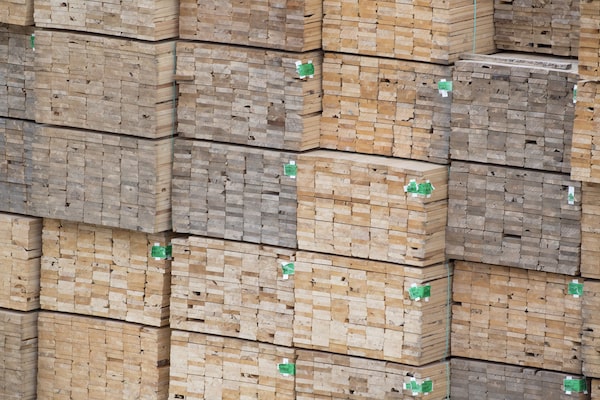
Softwood lumber is pictured in Richmond, B.C., April 25, 2017.JONATHAN HAYWARD/The Canadian Press
The B.C. government is forecasting its forestry revenue could tumble nearly 55 per cent in the next fiscal year, reflecting decreased lumber prices and reduced timber supplies.
Revenue from the forestry sector in British Columbia could decline to $846-million in the 2023-24 fiscal year, according to B.C. budget documents released on Tuesday.
The slump contrasts sharply with two consecutive years of strong showings in the industry. The sector contributed $1.89-billion to the province’s coffers in the 2021-22 fiscal year and is on track to raise $1.86-billion in the fiscal year that ends on March 31.
Benchmark prices for two-by-fours made from Western spruce, pine and fir are expected to average US$400 for 1,000 board feet in 2023, down 51 per cent from US$814 last year.
Lumber prices hit record highs in May, 2021, surpassing US$1,600 for 1,000 board feet when demand from home builders and renovators surged during the pandemic.
Many B.C. lumber producers have increasingly faced constraints in securing timber supplies in recent years.
“The impacts of the mountain pine beetle infestation, forest fires and the old-growth deferral strategy have reduced the supply of timber available to the forest industry,” the government said in its budget and fiscal plan.
Revenue is expected to be further constrained by the U.S. Department of Commerce’s decision earlier this year to maintain tariffs on imports of Canadian softwood lumber.
Most forests in Canada are on Crown land, with buyers paying “stumpage fees” to provincial governments for the right to log.
The U.S. has levied countervailing duties in retaliation for what it deems to be unfair provincial subsidies produced by the stumpage system. In addition, anti-dumping duties are being imposed in response to Canadian lumber allegedly sold at below-market value.
“B.C. disagrees with the views that the lumber industry is subsidized or that it sells lumber into the U.S. at below cost or sales value in Canada,” the budget documents said.
B.C.’s budget rings up $4.2-billion deficit, carbon tax to fund new housing and health-care spending
Revenue from natural gas royalties is forecast to decrease 9 per cent to $2.02-billion in the upcoming fiscal year.
The potential declines in B.C. forestry and natural gas activities are expected to be part of the trend of the broader economic slowdown. The provincial government is forecasting a 0.4-per-cent rise in B.C.’s real gross domestic product in 2023, compared with an estimated 2.8-per-cent growth last year.
The 13-member Economic Forecast Council, consisting of economists from across Canada who advise the B.C. Finance Ministry in preparing budgets, is predicting real GDP growth of 0.5 per cent in 2023.
For 2025 to 2027, the B.C. Finance Ministry is factoring in scheduled exports of liquefied natural gas in its forecast for slightly higher economic growth than what the council is predicting for those three years. Exports to Asia from LNG Canada’s Kitimat terminal are slated to start in 2025.
B.C. Finance Minister Katrine Conroy anticipates a $4.2-billion provincial deficit for the next fiscal year.
In her budget speech, Ms. Conroy did not mention new LNG production, which would contribute to emissions of greenhouse gases. She opted to highlight the NDP government’s efforts to help fight climate change, including plans to protect more old-growth forests.
“Our CleanBC plan is a key part of Canada’s plan, which is part of a global solution to reduce emissions,” said Ms. Conroy, who mentioned “climate” 11 times in her prepared speech.